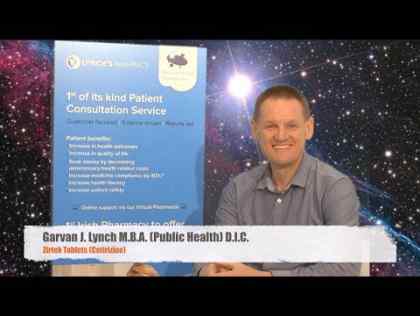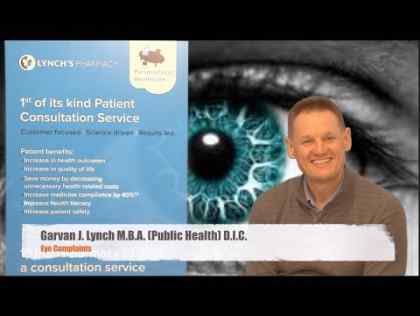
What is it?
Do you have a runny or stuffy nose that won't get better, or do these symptoms come back repeatedly? If so, you may have nonallergic rhinitis. If you do have rhinitis, the lining of your nose swells due to expanding blood vessels. The mucus glands in your nose get stimulated, causing a congested, drippy nose. The symptoms of nonallergic rhinitis are similar to those of hay fever (allergic rhinitis), but there's no allergic reaction involved. A common problem, nonallergic rhinitis affects both children and adults.
Although nonallergic rhinitis is more annoying than harmful, it can make you miserable. Triggers of nonallergic rhinitis symptoms vary from person to person and can include certain odors or irritants in the air, changes in the weather, some medications, certain foods, and chronic health conditions. A diagnosis of nonallergic rhinitis is made after an allergy cause is ruled out. This may require allergy skin or blood tests.
Symptoms
If you have nonallergic rhinitis, you probably have symptoms that come and go year-round. You may have constant symptoms, symptoms that last for hours or symptoms that last for days. Signs and symptoms of nonallergic rhinitis may include:
- Stuffy nose
- Runny nose
- Mucous (phlegm) in the throat (postnasal drip)
Nonallergic rhinitis doesn't usually cause itchy nose, eyes or throat — symptoms associated with allergies such as hay fever.
Causes
Nonallergic rhinitis occurs when blood vessels in your nose expand (dilate), filling the nasal lining with blood and fluid. There are several possible causes of this abnormal expansion of the blood vessels or inflammation in the nose. But, whatever the trigger, the result is the same — swollen nasal membranes and congestion.
Many things can trigger the nasal swelling in nonallergic rhinitis — some resulting in short-lived symptoms while others cause chronic problems. Nonallergic rhinitis triggers include:
- Environmental or occupational irritants. Dust, smog, secondhand smoke or strong odors, such as perfumes, can trigger nonallergic rhinitis. Chemical fumes, such as those you might be exposed to in certain occupations, also may be to blame.
- Weather changes. Temperature or humidity changes can trigger the membranes inside your nose to swell and cause a runny or stuffy nose.
- Infections. A common cause of nonallergic rhinitis is a viral infection — a cold or the flu, for example. This type of nonallergic rhinitis usually clears up after a few weeks but can cause lingering mucous in the throat (postnasal drip). Sometimes, this type of rhinitis can become chronic, causing ongoing discolored nasal discharge, facial pain and pressure (sinusitis).
- Foods and beverages. Nonallergic rhinitis may occur when you eat, especially after eating hot or spicy foods. Drinking alcoholic beverages, such as beer and wine, also may cause the membranes inside your nose to swell, leading to nasal congestion.
- Certain medications. Some medications can cause nonallergic rhinitis. These include nonsteroidal anti-inflammatory drugs (NSAIDs), such as aspirin and ibuprofen and high blood pressure (hypertension) medications, such as beta blockers. Nonallergic rhinitis can also be triggered in some people by sedatives, antidepressants, oral contraceptives or drugs used to treat erectile dysfunction. Overuse of decongestant nasal sprays can cause a type of nonallergic rhinitis called rhinitis medicamentosa.
- Hormone changes. Changes in hormones due to pregnancy, menstruation, oral contraceptive use or a hormonal condition such as hypothyroidism can cause nonallergic rhinitis.
- Stress. Emotional or physical stress can trigger nonallergic rhinitis in some people.
Risk factors
Factors that may increase your risk of nonallergic rhinitis include:
- Exposure to irritants. If you're exposed to smog, exhaust fumes or tobacco smoke — to name a few — you may be at increased risk of developing nonallergic rhinitis.
- Prolonged use of decongestant nasal drops or sprays. Using over-the-counter decongestant nasal drops or sprays (Afrin, Dristan, others) for more than a few days can actually cause more severe nasal congestion when the decongestant wears off, often called rebound congestion.
- Being female. Due to hormonal changes, nasal congestion often gets worse during menstruation and pregnancy.
- Occupational exposure to fumes. In some cases nonallergic rhinitis is triggered by exposure to an airborne irritant in the workplace (occupational rhinitis). Some common triggers include aircraft fuel or jet exhaust, solvents, or other chemicals and fumes from decomposing organic material such as compost.
- Having certain health problems. A number of chronic health conditions can cause or worsen rhinitis, such as asthma, lupus, cystic fibrosis and hormonal disorders.
Complications
Complications from nonallergic rhinitis include:
- Nasal polyps. These are soft, noncancerous (benign) growths that develop on the lining of your nose or sinuses due to chronic inflammation. Small polyps may not cause problems, but larger ones can block the airflow through your nose, making it difficult to breathe.
- Chronic sinusitis. Prolonged nasal congestion due to nonallergic rhinitis may increase your chances of developing sinusitis — an infection or inflammation of the membrane that lines the sinuses. When sinusitis lasts for longer than 12 consecutive weeks, it's referred to as chronic sinusitis. Sinusitis causes pain, tenderness and swelling around your eyes, cheeks, nose or forehead.
- Middle ear infections. Increased fluid and nasal congestion may lead to middle ear infections.
- Interrupted daily activities. Nonallergic rhinitis can be disruptive. You may be less productive at work or school, and you may need to take time off because your symptoms flare up. You may also miss work or school because you need to see your doctor.
Diagnosis
Nonallergic rhinitis is diagnosed based on your symptoms and ruling out other causes, especially allergies. Your doctor will perform a physical examination and ask questions about your symptoms. He or she may also recommend certain tests. There are no specific, definite tests used to diagnose nonallergic rhinitis.
Your doctor is likely to conclude your symptoms are caused by nonallergic rhinitis if you have symptoms of nasal congestion, runny nose or postnasal drip, and tests for other conditions don't reveal an underlying cause such as allergies or a sinus problem.
In some cases, your doctor may have you try a medication and see whether your symptoms improve.
Ruling out an allergic cause
In many cases, rhinitis is caused by an allergic reaction. The only way to be sure rhinitis isn't caused by allergies is through allergy testing, which may involve skin or blood tests.
- Skin test. To find out whether your symptoms might be caused by a certain allergen, your skin is pricked and exposed to small amounts of common airborne allergens such as dust mites, mold, pollen, cat and dog. If you're allergic to a particular allergen, you develop a raised bump (hive) at the test location on your skin. If you're not allergic to any of the substances, your skin looks normal.
- Blood test. A blood test can measure your immune system's response to common allergens by measuring the amount of certain antibodies in your bloodstream, known as immunoglobulin E (IgE) antibodies. A blood sample is sent to a medical laboratory, where it can be tested for evidence of sensitivity to specific allergens.
In some cases, rhinitis may be caused by both allergic and nonallergic causes.
Ruling out sinus problems
Your doctor will also want to be sure your symptoms aren't caused by a sinus problem such as a deviated septum or nasal polyps. If your doctor suspects a sinus problem may be causing your symptoms, you may need an imaging test to view your sinuses.
- Nasal endoscopy. This test involves looking at the inside of your nasal passages. This is done with a thin, fiber-optic viewing instrument called an endoscope. Your doctor will pass the fiber-optic endoscope through your nostrils to examine your nasal passages and sinuses.
- Computerized tomography (CT) scan. This procedure is a computerized X-ray technique that produces images of your sinuses that are more detailed than those produced by conventional X-ray exams.
References
http://www.webmd.com/allergies/nonallergic-rhinitis
http://www.medicinenet.com/chronic_rhinitis/article.htm
http://www.mayoclinic.org/diseases-conditions/nonallergic-rhinitis/diagnosis-treatment/treatment/txc-20179179
http://emedicine.medscape.com/article/874171-overview



